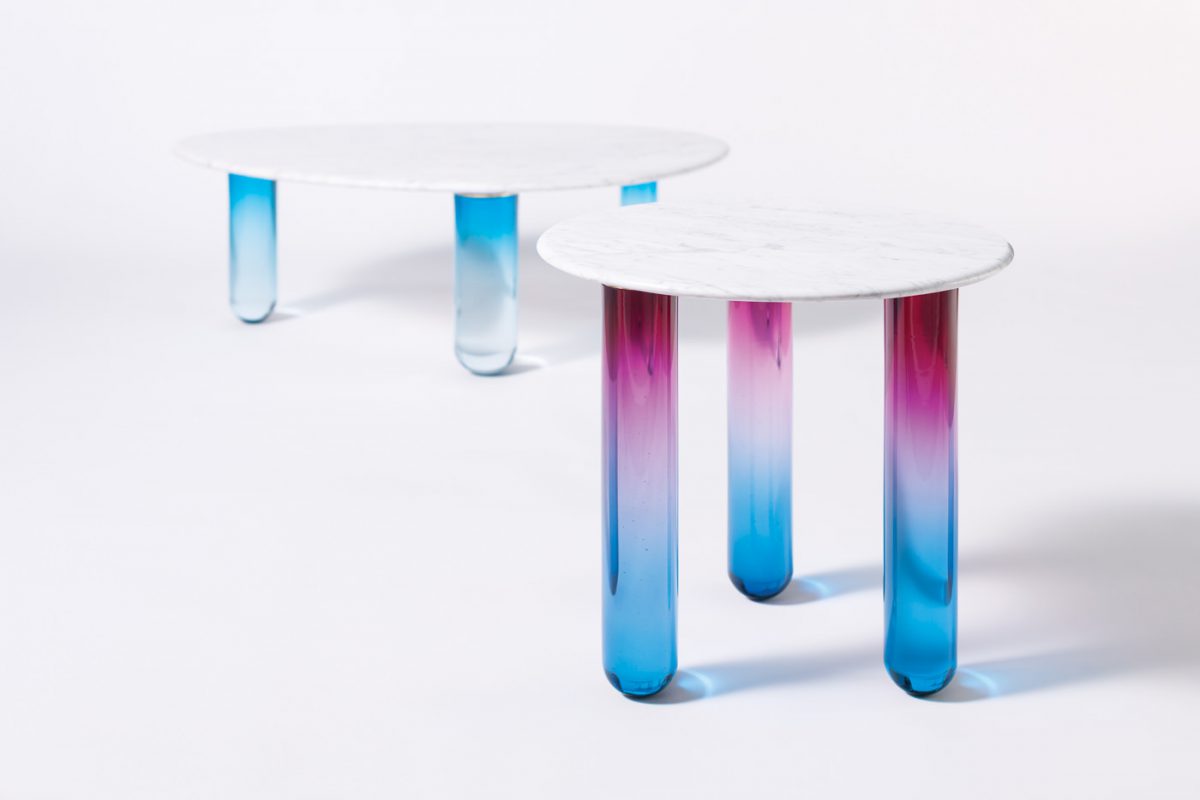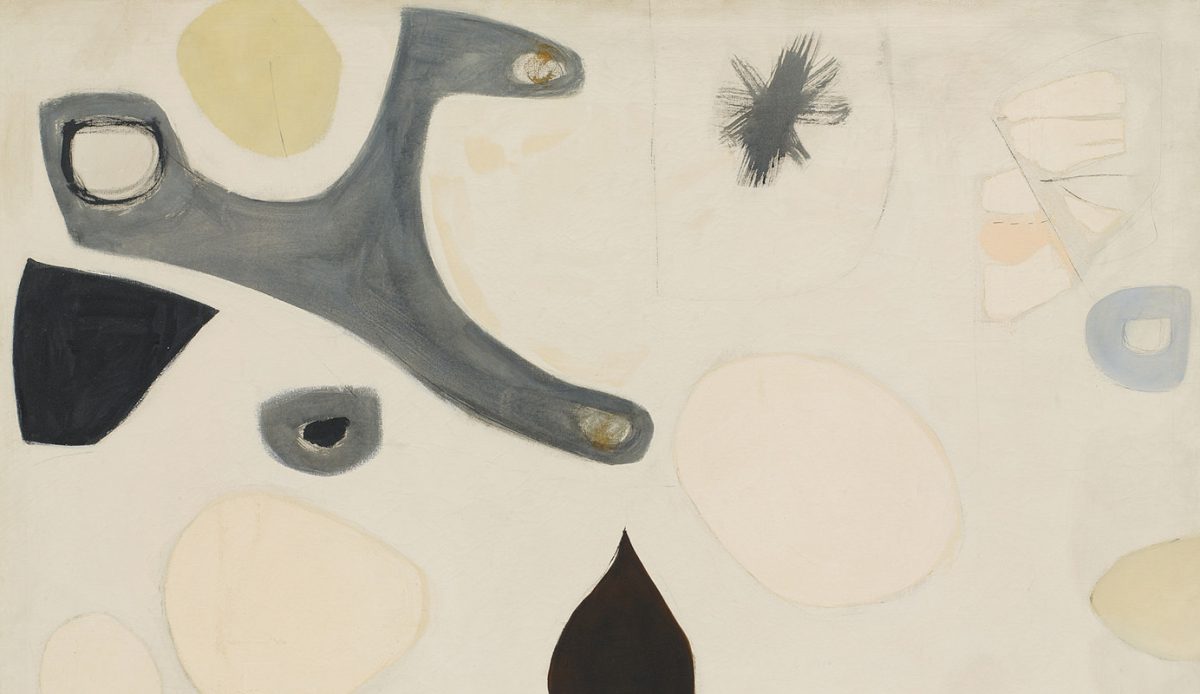Pasadena Museum of California Art
April 17-September 11, 2016
Claire Falkenstein, it’s fair to say, was one of 20th century America’s most inventive sculptors—except when she was painting. Best known for dense but aerated volumes formed by elaborate tangles of material (usually metal of some kind), Falkenstein actually began as something of a geometric artist and finished her long career as something of a representational painter. But, as this retrospective demonstrates, she asserted her sensibility early on, and any work of hers, be it eccentric object or expansive commission, bears her imprint.
How do you tell a Falkenstein welded steel “bush” from the similarly clumped pedestal pieces of her New York counterparts? How do you tell her elegant, late-Art-Deco reliefs from those fashioned by so many artists bridging the 1930s and ‘40s? How do you distinguish a delicate drawing or lithograph composed of myriad floating flecks from all the other quasi-Asian (and actually Asian) works on paper floating around the ‘60s? By the simultaneous firmness and nervousness of Falkenstein’s line, by her exquisite sense of the properties of diverse materials, by the tendency of her compositions to revolve centripetally and begin to fold in on themselves without ever collapsing. You see this in a 1939 ceramic and equally in a 1992 acrylic on canvas, even though the latter is big, flat and figurative, and the earlier work is small, intimate and loopy.
Falkenstein was a product of her time. Much of her work has affinities with abstract expressionism and European art informel—which should be no surprise, as she worked in San Francisco in the 1950s and in Paris and Italy in the ‘60s—but admits its roots in the prewar polarities of Surrealism and geometric art, more readily than does most American art of her generation. The relative obscurity into which Falkenstein fell even before her death here in LA in 1997 was due not to any lack of distinction or, conversely, any overwhelming idiosyncrasies, but simply to her refusal to heed the fashions of the moment. She changed style when she felt like it, not when told to do so, and kept herself in the game by employing a vast array of materials, from clay to glass to wood to aluminum to copper wire to iron to oil to acrylic to gouache to precious stones.
In fact, Falkenstein is unusual, if not unique, among American sculptors for the range of materials she used, not least in dramatic combination with one another. The principle of conjoining contrasting substances that governs jewelry design governed all Falkenstein’s work, certainly in three dimensions, right from the start. The early geometric works, with their eccentric contours, delicious surfaces and alluring colors capitalize on the poised dissonances she allowed between disparate substances. These objects from the 1940s are elegant because they are rather garish and gawky—and because they are capable of formal moves at least as playful and outré as Alexander Calder’s. The later pieces, crushed webs or controlled explosions of wire, ribbons, tubing and the like, often assume, or at least pretend at, functionality; Falkenstein was especially well known for the gates she fashioned especially for clients at home and abroad, and the show photo-documents the ones that couldn’t actually be shown (or no longer exist).
The survey depicts other site-specific or temporary sculpture as well, testifying to Falkenstein’s unstinting sense of adventure and virtuosic handling of all kinds of stuff, from logs to bamboo to fused Venetian glass to Lexan. And, despite the varying scales and tones and compositions, it all always looks—and feels—like her.

Claire Falkenstein | The Sign, or Moving Points, 1961. Gouache and Watercolor on Paper, 19 x 25 inches.
The Falkenstein Foundation. Courtesy of Michael Rosenfeld Gallery, LLC, New York.









